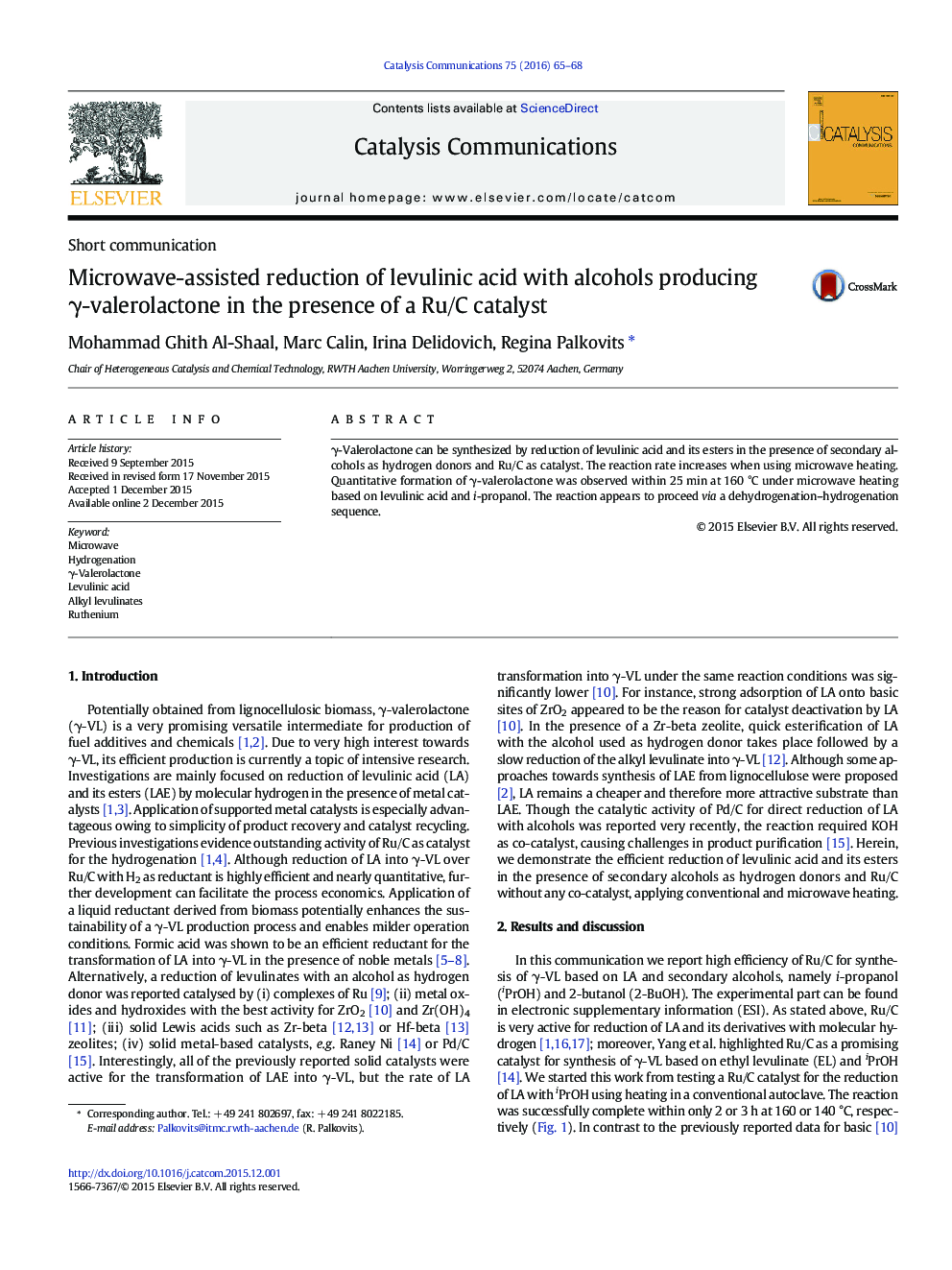| Article ID | Journal | Published Year | Pages | File Type |
|---|---|---|---|---|
| 49219 | Catalysis Communications | 2016 | 4 Pages |
•Ru catalyses reduction of levulinic acid with secondary alcohols to γ-valerolactone.•Reaction rate increases under microwave irradiation compared to conventional heating.•i-Propanol and 2-butanol are the best reductants for levulinic acid and its esters.•The dehydrogenation–hydrogenation mechanism with Ru0 active species was proposed.•Ru/C exhibited stability upon recycling.
γ-Valerolactone can be synthesized by reduction of levulinic acid and its esters in the presence of secondary alcohols as hydrogen donors and Ru/C as catalyst. The reaction rate increases when using microwave heating. Quantitative formation of γ-valerolactone was observed within 25 min at 160 °C under microwave heating based on levulinic acid and i-propanol. The reaction appears to proceed via a dehydrogenation–hydrogenation sequence.
Graphical abstractFigure optionsDownload full-size imageDownload as PowerPoint slide
